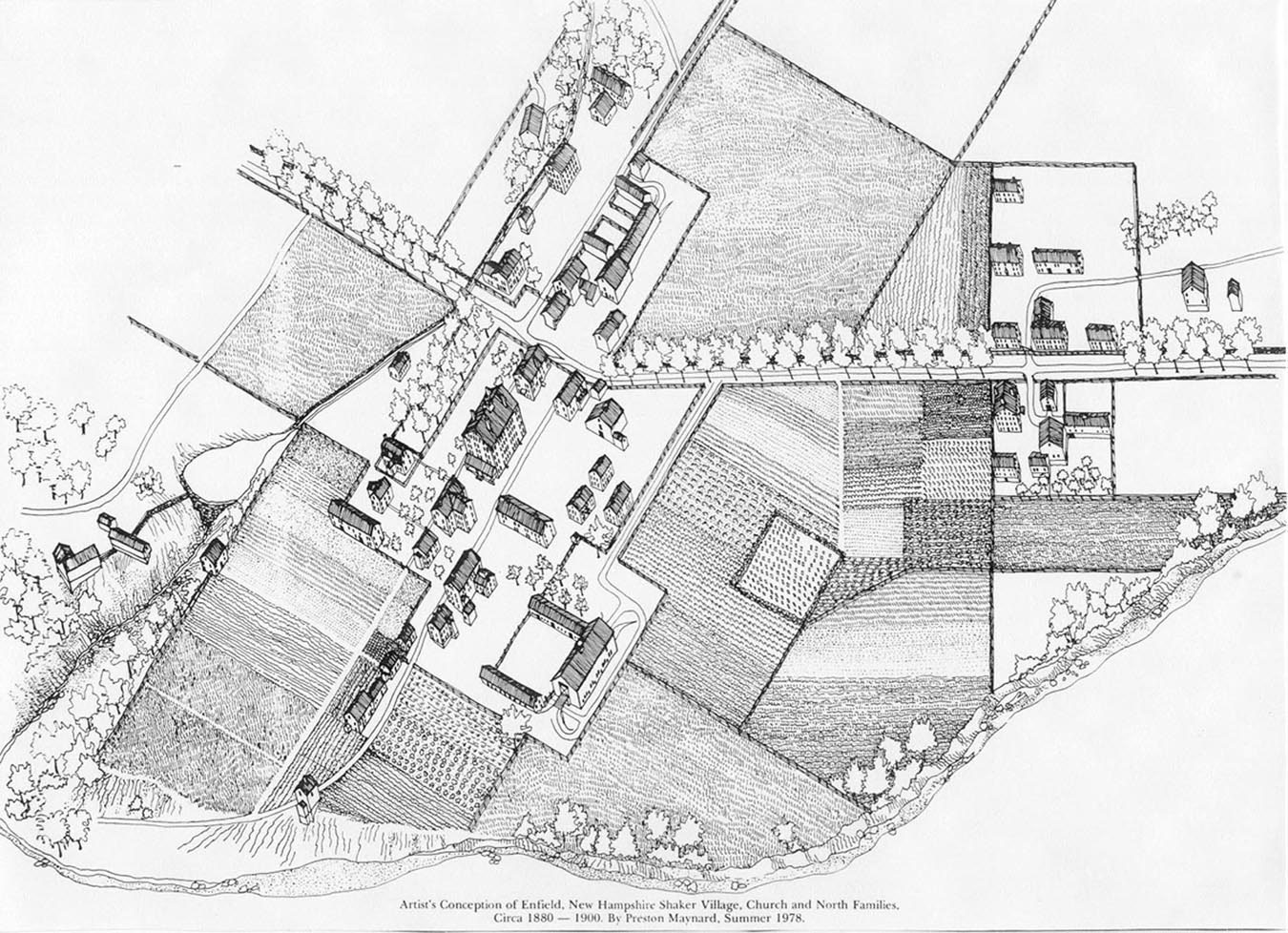Enfield Shaker Village History
Nestled in a lush valley between Shaker Mountain and Mascoma Lake in New Hampshire, it is easy to see why this special place has been cherished for over two hundred years–first by the Enfield Shakers, who came to call their village “Chosen Vale,” and now by Museum staff, donors, members, and visitors from around the world.
Enfield Shakers (1793-1923)
Founded in 1793, this village was the ninth of 18 Shaker communities to be established in this country. At its peak in the mid 19th century, the community was home to three “Families” of Shakers. Here, Brothers, Sisters, and children lived, worked, and worshiped. Here, they practiced equality of the sexes and races, celibacy, pacifism, and communal ownership of property.
Striving to create a heaven on earth, the Enfield Shakers built more than 100 buildings (including the Great Stone Dwelling, the largest-ever Shaker edifice), farmed over 3,000 acres of fertile land, educated children in model schools, and followed the “Shaker Way” of worship.
This drawing, by Preston Maynard, depicts the community’s physical site as it looked in the 1880s. It was produced in 1978 as part of the Historic American Buildings Survey (HABS) that resulted in the placement of the Enfield Shaker Village on the National Register of Historic Places as a Historic District in 1979.
Missionaries of Our Lady of La Salette (1927-1985)
In 1923, after 130 years of farming, manufacturing, and productive existence, declining membership forced the Shakers to close their community and put it up for sale. In 1927, the Shakers sold the site to the Missionaries of Our Lady of La Salette, an order of Catholic priests, ensuring the continued tradition of spiritual, communal life on the site. The La Salettes also continued the very active agricultural use of the site as well as establishing a seminary and high school here. In 1985 the property changed hands again when the remaining buildings and grounds were purchased by a group of private investors.
Enfield Shaker Museum (Since 1986)
Enfield Shaker Museum is a nonprofit, membership organization dedicated to preserving and sharing the history of the Enfield, New Hampshire Shaker village. Since opening in 1986, the Museum has developed educational exhibits and programs designed to invite active participation in learning about the extraordinary people who once lived and worked here.
Each year, the Museum captures more of the Enfield Shakers’ heritage to preserve for present and future generations. Through the efforts and support of hundreds of volunteers, the Museum purchased the Laundry/Dairy Building in 1991. In 1993, the Museum acquired the Stone Mill Building, the West Meadow Barn and the 18 acres of land surrounding them, and an illustrative collection of Shaker artifacts. An additional 1100 acres of Shaker fields, pastures, and forest were purchased by the State of New Hampshire and are now permanently protected from development with guaranteed public access for recreational purposes. In September 1997 the Museum was able to purchase four more buildings and 8.54 acres of the core of the village. This purchase included the Shakers’ East and West Brethrens’ Shops, the La Salettes’ Mary Keane Chapel, and the centerpiece of the Enfield Shaker community, the spectacular 1841 Great Stone Dwelling. The 1880 Ministry House was purchased by the Museum in 1999. The most recent purchase by the Museum was the 1854 Cow Barn, in 2015.
Enfield Shaker Museum offers year-round opportunities for families and individuals, including a full schedule of events, workshops, tours, exhibitions, and craft demonstrations. Plan a visit to Enfield Shaker Museum, take in the exquisite sights and smells of our Shaker Garden, watch skilled artisans demonstrate their traditional crafts, learn the story of the Enfield Shakers through exhibitions of their furniture, tools, clothing, and historic photographs, and browse through the Shaker Store.
Museum members and donors are vital to our success.
Be a generous contributor and support the preservation and interpretation of this important site today!


